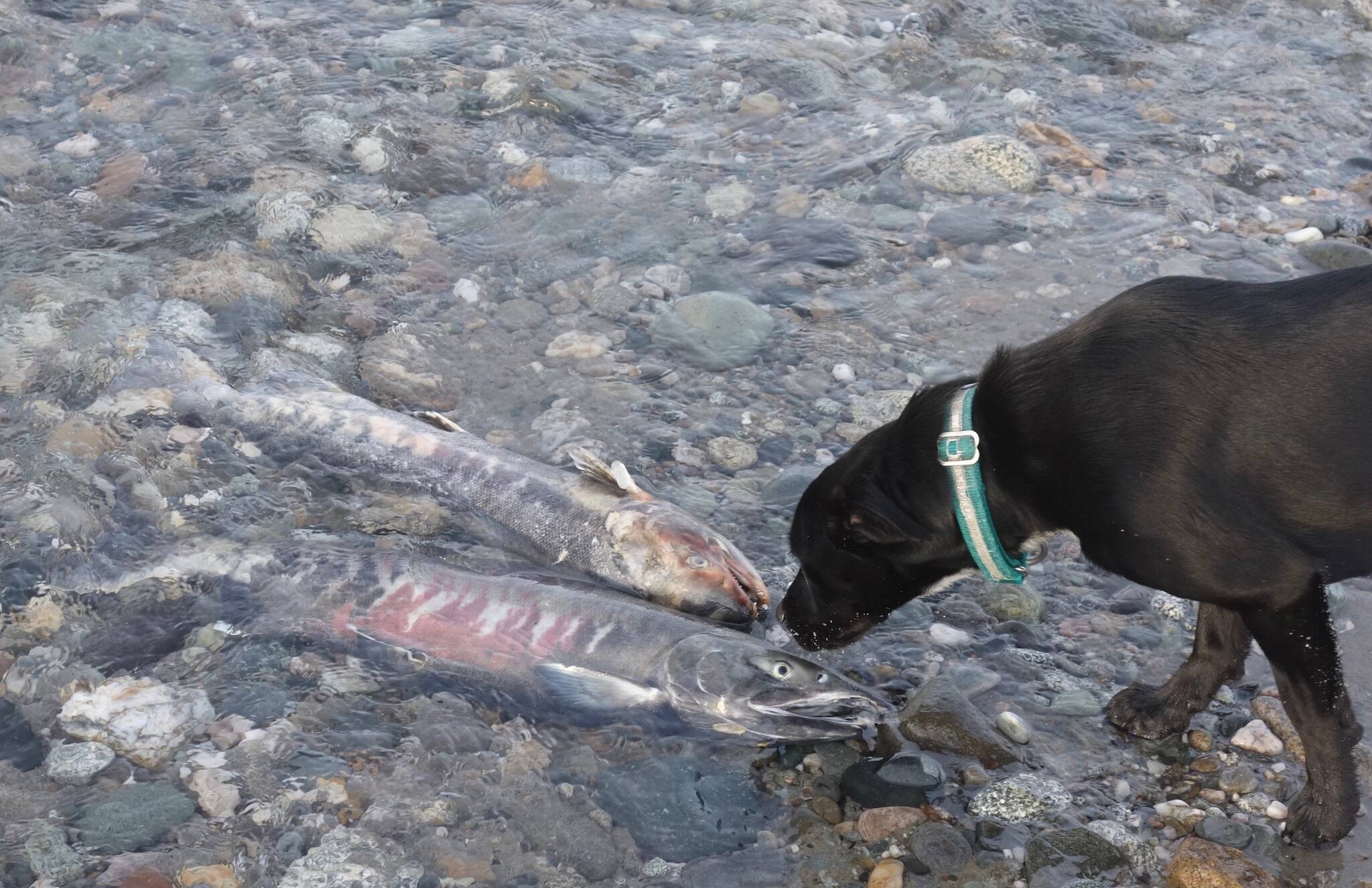When a Lab vacuums the ground with their nose and their tail moves like a helicopter blade, you know a grouse is about to fly. When the dog stops like a dragonfly, then runs off sniffing an invisible path, a snowshoe hare has crossed your trail.
All this entertainment is courtesy of that most sensitive appendage, a dog’s nose. It’s an instrument humans have not been able to duplicate. Search-and-rescue groups use dogs to find lost people, dead people, and people buried under earth and snow. Dogs have also been used to find seals on ice, gas leaks and the presence of gypsy moth egg sacks.
Lurking behind those textured, damp nostrils are sensitive membranes that allow a dog to distinguish smells—molecules of odor that emanate from every living or once-living thing—at least one thousand times better than humans.
A dog processes odoriferous molecules more readily because a dog has a much larger set of scent membranes within its nose, explained Robert Burton in his book, “The Language of Smell.” While humans have a pair of these “olfactory receptors,” each is about the size of a postage stamp in our noses. Dogs’ receptors can be as large as a handkerchief, depending on how big the dog is.
Dogs’ noses work much the way ours do: We inhale molecules of odor, which then dissolve in mucus. The dissolved odors are picked up by the olfactory receptors, located behind the spot where sunglasses rest on the nose. An organ called the olfactory bulb shunts the chemical messages straight to the part of the brain that deals with stored feelings and memories, bypassing the cerebral cortex, the main part of the brain. This short-circuit is one reason smells trigger strong emotions and memories that may have lain dormant for years.
With its larger olfactory membranes, a dog’s nose does amazing things. Researchers at Duke University found that a randomly selected fox terrier could after three weeks detect the scent of a fingerprint on a glass slide when compared to four clean slides. When the researchers placed the slides outside in the rain and dust, the dog was still able to pick out the slide with the fingerprint after 24 hours of weathering.
Dogs have fantastic tracking ability because humans leave a pretty good scent trail. Most researchers think the scent trails consists of “rafts,” tiny bits of skin cells that have an odor when mixed with sweat and fed upon by bacteria. Because the human body sheds about 50 million cells each minute, rafts fall from the body like a shower of confetti. Dogs quickly detect these rafts, as well as other scents that may not be apparent to the producer, including breath and sweat vapor. Each person’s scent trail is unique, and dogs are remarkably good at separating one person’s trail from another’s.
In an experiment performed a century ago, G. J. Romanes lined up 11 men behind him. He started walking, with each man walking precisely in his footsteps. After they walked 200 yards, the men dispersed, with five going to the right, six to the left. All the men hid. Another person released Romanes’ dog, which found Romanes almost instantly after hesitating slightly where the men separated.
Seventy years after Romanes’ study, H. Kalmus performed a similar test using identical twins. The twins must have had quite similar scents, Kalmus reported: “if the dog was given the scent of one twin, it would happily follow the other.” When both twins were used in the experiment, however, the dog was able to pick one from the other.
• Since the late 1970s, the University of Alaska Fairbanks’ Geophysical Institute has provided this column free in cooperation with the UAF research community. Ned Rozell is a science writer for the Geophysical Institute. A version of this column appeared in 1998.

